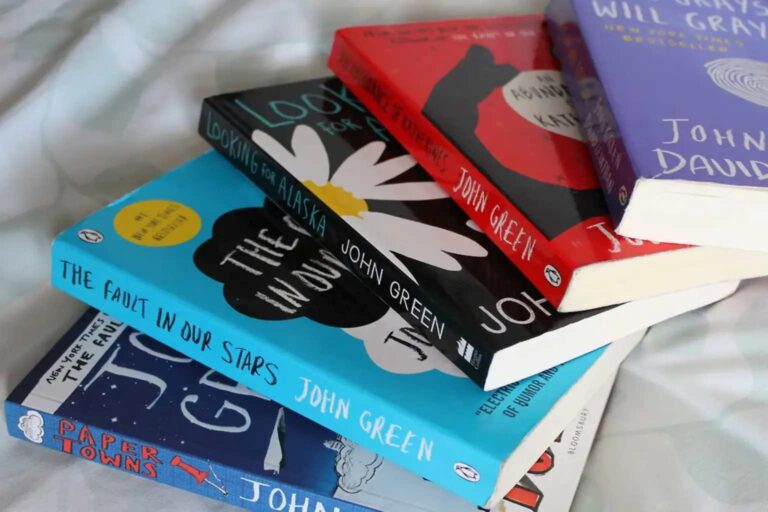A novella looks manageable until you try to write one. Then it turns slippery. Too short for subplots, too long to wing it. But there’s a method to it, and most writers learn it the hard way. This guide saves you that cycle. Most first drafts break for the same reasons: too much build-up, too little structure, and a midpoint that doesn’t shift anything.
Unlike short stories, novellas don’t survive on tone alone. They need a shape. Something has to change, and that change has to matter enough to carry the entire story. This form isn’t new, and it isn’t niche. The Death of Ivan Ilyich, Of Mice and Men, and The Sense of an Ending all prove that small stories can still leave a deep mark. But only if they’re built to hold. Here, you’ll learn how to write a novella with our clear, structured, and grounded writing process.
What Is A Novella?
The novella exists for stories that don’t want to be stretched. You’ve got one main character, one core conflict, and just enough room to explore it well. That’s the format’s real charm; it respects your time and the reader’s attention.
Most novellas fall between 15,000 and 40,000 words, but that’s not what defines them. It’s the structure. No side quests. No ten-page flashbacks. You’re telling one story and telling it cleanly.
Writers go this route when the material is too layered for a short story, but not built for novel-length sprawl. It’s a sharp tool, not a fallback. And when done well, it leaves a deeper cut than its size would suggest.
Look at The Death of Ivan Ilyich, The Little Prince, and Of Mice and Men. Each one makes its point without wasting your afternoon. A novella is about efficiency. And if you’re writing one, that’s probably what you’re after too.
What Is The Difference Between A Novel, Novella, And Short Story?
All three forms can tell a good story, but the real difference lies in how much story they’re built to hold. A short story is a snapshot. A novel is a whole film. A novella? That’s a short, tight feature.
The real problem shows up when you pick the wrong form. Short stories collapse under too much plot. Novels fall apart when there’s not enough. A novella saves you from both, but only if you use its shape properly.
Short stories revolve around one clean pivot. Novels stretch across arcs and subplots. A novella gives you one shot to build pressure, then release it. That simplicity makes it stronger, not weaker.
Here’s how most writers decide:
- Short story: One event. Under 10,000 words.
- Novella: One arc. 15,000–40,000 words.
- Novel: Multiple arcs. 50,000 words and up.
Of Mice and Men is a novella. The Great Gatsby? Barely passes for a novel. The difference isn’t about quality. It’s about load-bearing capacity. Use the one that holds your idea without buckling.
RELATED READING: 25 Mind Blowing Plot Twist Ideas To Elevate Your Story
Types Of Novellas
Novellas don’t follow fixed categories, but the way they function usually falls into one of three types. Some are exploratory, more about mood, theme, or inner conflict than plot. The Awakening does this. So does On Chesil Beach.
Then there are concept novellas, where the entire story revolves around one sharp idea. The Little Prince looks like a children’s book, but it builds a philosophy. Bartleby, the Scrivener lives on its premise.
And then there are plot-led novellas: lean, structured, momentum-driven. They feel cinematic. Breakfast at Tiffany’s fits here. So does Chronicle of a Death Foretold.
Each type demands something different from you as a writer. If you’re coming from genre fiction, especially if you’re figuring out how to write a romance novella, you’ll likely lean plot-forward. If you’re writing literary fiction, you may focus more on tone or theme.
Either way, a novella has to move. The engine might change, but it has to run clean.
How To Write A Novella – 5 Actionable Tips
There’s no trick to writing a novella. But there is a shape. These five steps cover the spine, which holds the story together when you don’t have 80,000 words to play with.
1. The hook – Make the first 500 words count
In a novella, the opening doesn’t get to stall. You’re not easing the reader in; you’re placing them somewhere specific, with a character they’ll want to follow. There’s no need to be loud about it. But there does need to be intent. Set tone. Suggest tension. Show that something matters and that it might shift.
Think of the first few pages as a contract. If you waste them, the reader assumes you’ll waste the rest too.
2. Rising tension – Build with brevity
Once you’re in, don’t meander. A novella doesn’t tolerate repetition, detours, or slow reveals. You’re building something small and pressurised. That means tracking the stakes carefully. Conflict should keep tightening, even if the plot looks quiet on the surface.
Use fewer scenes, but make each one count. If a section doesn’t move the story forward or deepen its core tension, it’s probably not needed.
3. The midpoint twist – Flip the narrative
Halfway through, something shifts. It doesn’t have to be dramatic, but it should change how the reader sees things. Maybe the character learns something that reframes their actions. Maybe the problem turns out to be something else entirely.
This pivot gives your story momentum. Without it, the second half can feel like a slow crawl to an ending the reader already guessed.
4. Climax – Deliver the emotional punch
By the time you reach the climax, the central thread should be pulled tight. You’ve earned some weight here, don’t let it go slack. A novella’s climax doesn’t need spectacle. But it does need force even if it’s quiet.
Ask yourself what this story has been about. Then make sure that it shows up clearly, not as a monologue or moral, but as a moment that lands.
5. Resolution – Leave a lingering impact
Wrap it up. But don’t overwrap it. The best novella endings aren’t about closure. They’re about effect. The final few paragraphs should leave the reader with a specific feeling or question that won’t shake off easily. Let the story echo a little. Let it breathe. Just don’t let it drift.
Creating Characters Who Matter – Fast
Characters in novellas don’t have the space to unfold slowly. You don’t get three chapters of memory or a full page of inner monologue. You need to show who they are in motion, almost immediately.
Start with:
- One clear motivation – What do they want?
- One friction point – What’s in the way?
- One contradiction – What doesn’t add up about them?
That’s enough to build depth without dragging. But what makes them work is how they move through pressure. In a novella, the plot is the characters’ response. There’s no separation. The choices they make are what push the story forward.
If you’re figuring out how to write a novella for beginners, start by thinking of your character like a lit fuse. What happens when they’re pressed, cornered, or wrong? Build from there.
Skip the profiles. Show us the tension in what they do, not what you say they are. If you’ve done this right, you won’t need to explain who they are. We’ll know.
One way to test this is to strip the scene of dialogue. Can we still feel the tension? Can we still track what’s at stake? If not, the character might be reacting passively, not making choices.
A novella doesn’t reward passive characters. It needs momentum, and that momentum comes from friction. Character friction, situational friction, inner contradiction, all of it shows through action. That’s the work. Not explaining, but revealing. That’s how to write a novella for beginners: make pressure visible, then let your characters crack or climb.
Setting The Scene Without Slowing The Pace
You’re not writing epic fantasy. You don’t need five pages about the village. What you need is an atmosphere that slips in alongside the action, a description that builds tone without stopping the clock.
Focus on:
- What the character notices, not what’s objectively “there”
- How the space feels, not just how it looks
- How the setting shapes choice or limits movement
And here’s the part most people miss: setting can raise the stakes. A narrow hallway changes what’s possible in a chase. A crowded café changes what can be said aloud. In a novella, space isn’t just backdrop; it’s pressure.
Don’t just describe. Use the setting. Scene and setting aren’t the same thing. The scene is what’s happening. The setting is where it’s happening. You only need enough of the second to make the first feel anchored.
Setting isn’t just a stage; it can function like a silent antagonist. The heatwave that shortens tempers. The rainy night delays escape. The dim hallway where something important gets misread. If your environment doesn’t create tension, it’s just scenery.
Test each setting choice with this: Does it shape the outcome of the scene? Does it limit or complicate how something unfolds? If not, consider changing it. You don’t need grand world-building. You need a location with consequences. A locked door. A noisy apartment. A parking lot at midnight. These are story triggers, not just locations.
In a novella, that kind of pressure helps replace what you don’t have room to write. It lets you say more with less. Use it.
RELATED READING: 10 Literary Devices With Examples To Enhance Storytelling
The Writing Routine – Finish Your Novella In 30 Days
You’re not writing a novel. You don’t need six months and a Pinterest board. What you need is a plan that holds when motivation doesn’t.
Here’s one that works:
- Days 1–5: Outline story beats. Write a one-line summary for each scene. (This is where how to outline a novella actually matters.) Don’t just jot ideas, make decisions. Where’s the midpoint? What turns everything? Get that down.
- Days 6–22: Write 900–1,100 words daily. No skipping ahead. Stick to the sequence. If a scene feels off, flag it, don’t stop to fix it.
- Days 23–27: Patch transitions. Trim exposition. If a scene doesn’t move the story, it goes.
- Days 28–30: Read it front to back. Cut 10%. Watch for tone slips. Look at it like someone else wrote it.
Add buffers. Life interrupts. Expect to miss a few days, but don’t let that spiral. If you lose rhythm, reread the last three scenes. Pick up from movement, not mood.
The point is to stay inside the shape. A novella breaks when you lose focus halfway and start inventing side plots to stay “productive.” Writing a novella is about controlled momentum. You don’t need inspiration every day; you need a system that lowers the friction. That’s why sticking to the sequence matters. Each scene feeds the next. Breaking that chain is where things start to sprawl.
Keep your writing environment predictable. Open the same doc, same hour, same chair, if possible. Build cues that make the work automatic. If you miss a day, reread the last 200 words. Don’t spiral into edits. Just re-enter the current scene and push forward.
Make a “cut list” as you write. Anything that feels interesting but off-topic goes there. You’ll need it later, when trimming back. It also helps you stay honest: not every idea belongs in this draft.
Finally, don’t build rituals around writing. Build a rhythm around story movement. When the scene is stuck, zoom out: Are you in the right beat? Or just filling space?
Self-Editing A Novella: Less Words, More Impact
Editing a novella means being ruthless with what’s taking up space. That includes the nice lines, the backstory detours, and the long descriptions you convinced yourself were necessary. The truth is: if it doesn’t move the story forward or deepen the emotional arc, it can go.
Here’s a good starting point:
- Revisit structure – Do you have one clear arc? Is the midpoint turning something? Is the ending doing real work, or just arriving? If you’re still unsure how to structure a novella, trace what changes in your protagonist and when. Look for narrative weight.
- Cut sideways scenes – Does the scene raise the stakes? Does it shift tension or deepen character? If not, it’s a delay. Keep what pressurizes, not what decorates.
- Fix voice drift – Are there places where you stopped sounding like yourself and started sounding “writerly”? That tone shift can break immersion. Readers know when you’re bluffing.
Once the obvious cuts are made, look at the rhythm. Do two slow scenes follow each other? Does a sharp emotional beat get buried in dialogue? Editing isn’t just cutting words; it’s rearranging weight. Tighten placement, not just language.
Resist the urge to “elevate” your writing. The point of editing isn’t to add sparkle, it’s to get the story as clean and pressurised as possible. A good novella reads fast because it doesn’t carry dead weight. It moves like something urgent.
Why Writing A Novella Might Be Your Best First Step As A Writer
Most people think starting small means starting easy. But a novella isn’t a shortcut. It’s a challenge with boundaries. And that’s exactly what makes it useful.
If you’ve never finished a full story arc before, a novella forces you to:
- Plan your structure early because there’s no room to figure it out later
- Cut fluff on instinct because every scene has to justify itself
- Balance character and plot because one without the other won’t carry the form
You’ll learn more about writing from 25,000 words of pressure-tested fiction than you will from 80,000 words of drift.
It’s also a format that’s gaining ground. More digital platforms are buying novellas. Agents are open to them. Indie writers are publishing them well. You’re not writing into a dead form. You’re writing into a compact, working one.
If you can write a novella that lands, you’ve already done what most writers never do: build a story that holds its shape all the way through.
Once you’ve done that? A novel is just more space, not more skill. So, write a novella because that skill doesn’t vanish. It carries forward. Which means every form after this one, shorter, longer, or stranger, becomes less of a mystery and more of a choice.




